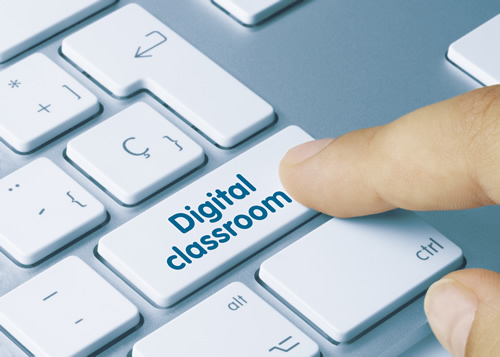Most teachers today view edtech as an essential part of an increasingly digital classroom, and a new report from Common Sense sheds light on the role these edtech tools play in teaching and learning.
Today, edtech tools are ubiquitous, and the rise of personal devices and anytime, anywhere access have changed how we consume and create. The Common Sense Census: Inside the 21st-Century Classroom looks at how K-12 educators have adapted to these critical shifts in schools and society.
From the benefits of teaching lifelong digital citizenship skills to the challenges of preparing students to critically evaluate online information, Educators surveyed in the report share their perspectives on what it’s like to teach in a digital classroom and in the fast-changing digital world beyond.
Twelve observations about today’s digital classroom
1. Digital citizenship is being taught in a majority of schools. Roughly 60 percent of K-12 teachers use some kind of digital citizenship curriculum or resource with students, and about 70 percent teach at least one type of digital citizenship competency. The most common topics are digital drama, cyberbullying, hate speech, and privacy and safety.
Related: 5 doable digital citizenship goals for teachers
2. Teachers believe digital citizenship is effective in helping students make smart, safe, and ethical decisions online. Most teachers (91 percent) who have used digital citizenship curriculum say it is at least moderately effective.
3. Teachers worry about their students’ ability to critically evaluate online content. Thirty-five percent of teachers observe this challenge frequently or very frequently in their classrooms.
4. More than a quarter of high school teachers report sexting as an issue. Twenty-seven percent say it happens in their classrooms at least occasionally, compared to 19 percent of middle school teachers.
5. Video is the king of edtech in the classroom. Streaming services such as YouTube and Netflix are the most commonly-used type of digital tool–about 60 percent of K-12 teachers use them in classrooms. Productivity and presentation tools such as Google G Suite for Education and Microsoft Office are the second most common digital tool.
6. Teachers place a high value on digital creation tools in developing 21st-century skills, but these tools are among the least used in the digital classroom. Productivity and presentation tools, digital creation tools, and learning management systems are all among teachers’ most effective digital tools for developing students’ 21st-century skills.
7. The gap between the edtech products teachers use and what they say is effective is real and cuts across subjects. For instance, ELA teachers rate productivity and presentation tools, along with assistive technology, as the most effective types of digital tools for developing ELA content knowledge and skills, but they often use other digital tools that they rated as less effective with greater frequency.
8. Many teachers aren’t getting effective professional development to support their use of educational technology in the digital classroom.
9. Many technology products purchased by schools and districts go unused. Around one-third of teachers say they don’t, or almost never, use a technology product provided to them by their school or district.
Related: 10 findings about K-12 digital learning
10. Home access to technology continues to be a challenge for teachers and students in schools serving lower-income students. Roughly 12 percent of teachers say 61-100 percent of their students do not have home access to the internet or a computer.
11. Teachers who assign homework that requires access to digital devices and/or broadband internet outside of school are more likely to teach in affluent, non-Title I schools than in Title I schools. About 42 percent of teachers in Title I schools never assign homework requiring digital access outside of school, compared to 31 percent of teachers in non-Title I schools who never do so.
12. One-third of teachers say their students’ learning would be limited a great deal, or quite a bit, if they didn’t have home access to a computer or the internet. Teachers in schools with student populations of predominantly students of color are more likely to say it would limit learning.
- Educators love their edtech, but want more training - April 18, 2024
- Friday 5: College and career readiness - April 12, 2024
- Cybersecurity: eSN Innovation Roundtable - April 11, 2024

